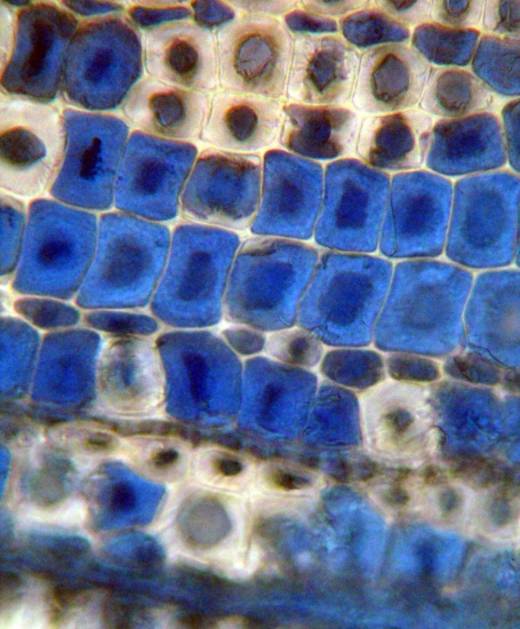Assessment of the state of preservation of waterlogged archaeological wood
Type of Activity: RTD
Objectives: Waterlogged wood is one of the commonest materials found on underwater archaeological sites. An exact assessment of its state of preservation is necessary in order obtain bench mark data for wood that is to be preserved in situ, or re-buried, or to select the optimal conservation process should it be excavated and raised. Archaeological wood from waterlogged environments differs from recent wood due to the effects of physical, chemical and biological degradation. Animals, fungi and bacteria living in the surrounding water or sediment cause degradation, and wood only survives for longer periods under anoxic conditions.
Under these conditions, bacteria are the primary degraders of wood (Figure 18), decomposing the cell wall from the lumen towards the middle lamella. The outer shape of the wood stays intact, whereas the density, and thereby the strength properties, are often reduced. Larger artefacts, such as ships timbers, often show an outer degraded layer with a less degraded centre. Smaller artefacts can often be heavily degraded, with only the middle lamella remaining, and a density as low as 50 kg/m3.
Assessments of the state of preservation until recently have included analysing the chemical composition (lignin, cellulose, other cell wall components); and physical properties (tendency to collapse and shrinkage, bulk density, maximum water content, compression strength and porosity/diffusion coefficient). These assessments are sometimes destructive, and require representative samples to be taken from the artefact and analysed in the laboratory.
The objective of WP4 is to:
• develop and test non-destructive hand held and diver held tools to quantitatively assess the state of preservation of fully waterlogged wooden artefacts both in the laboratory and in situ underwater.


